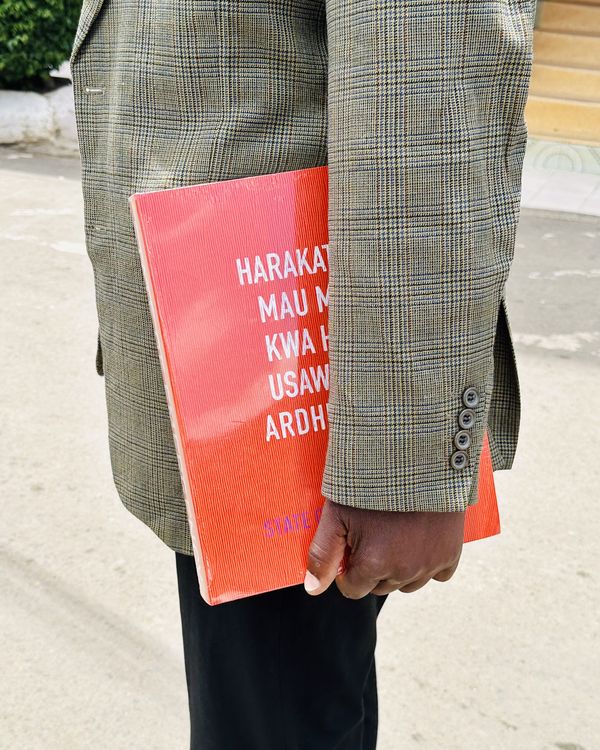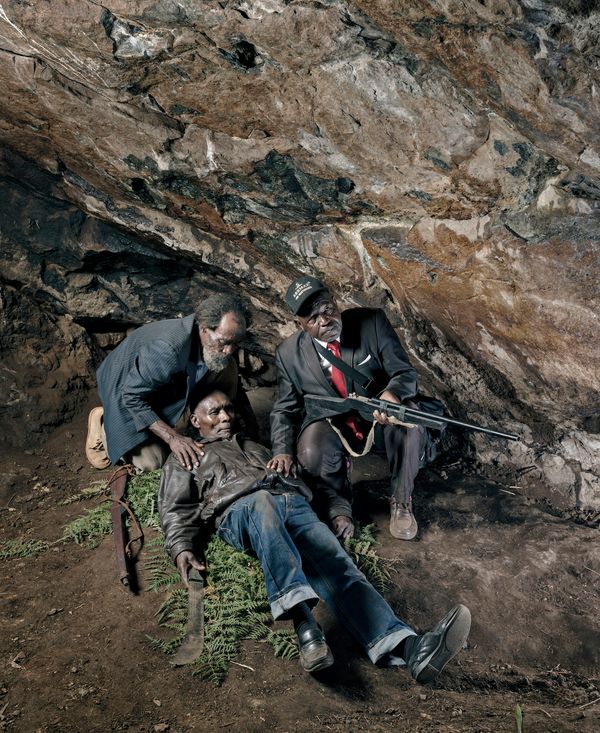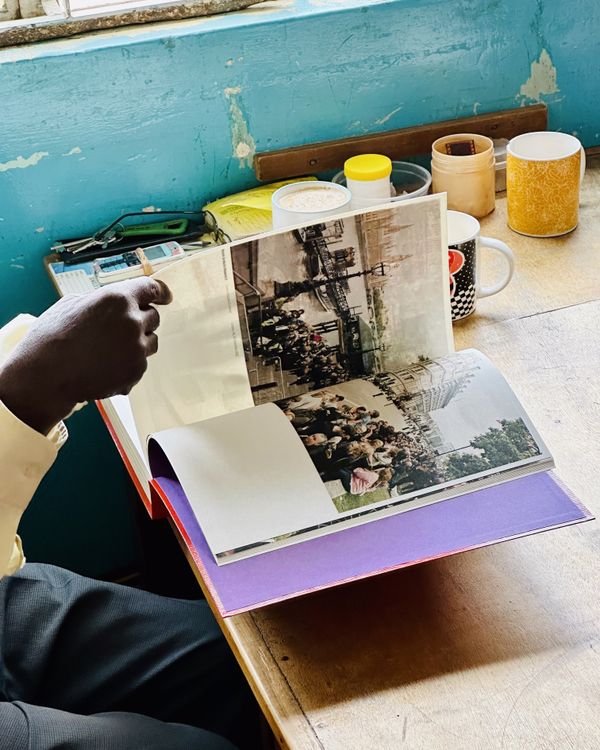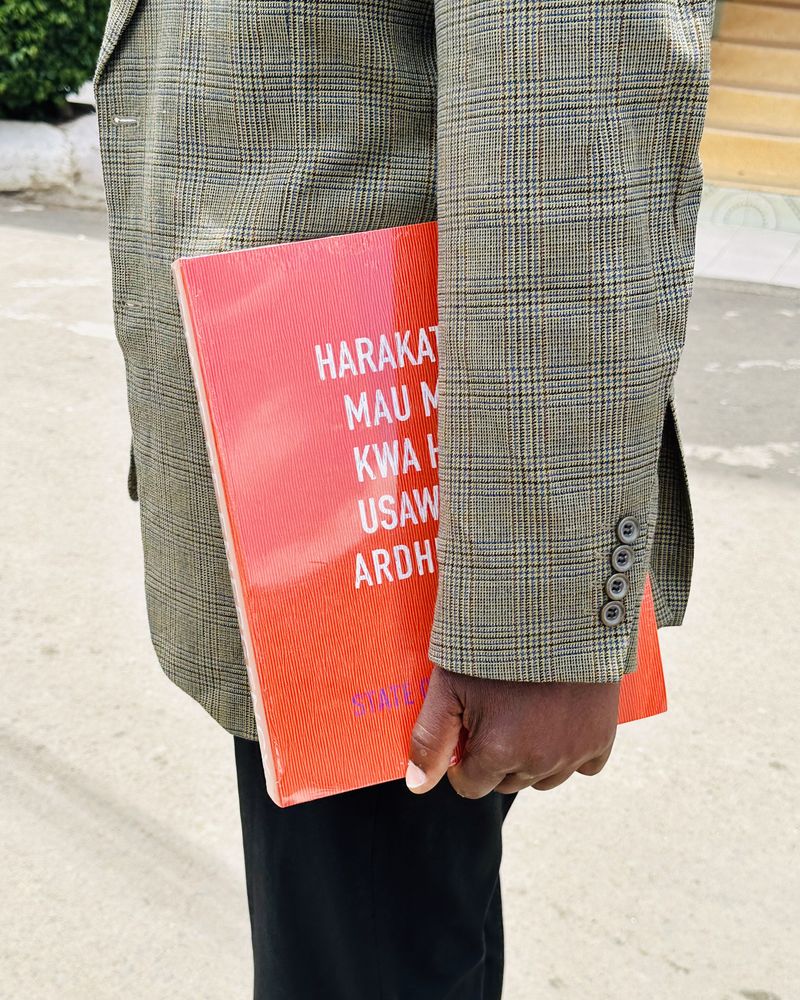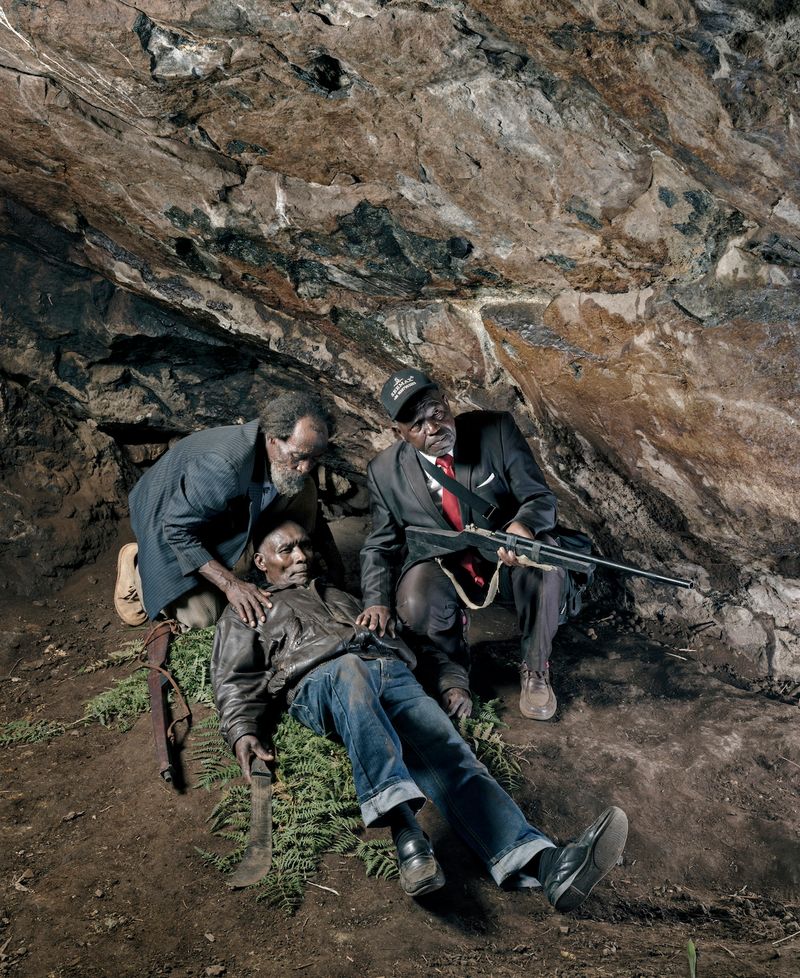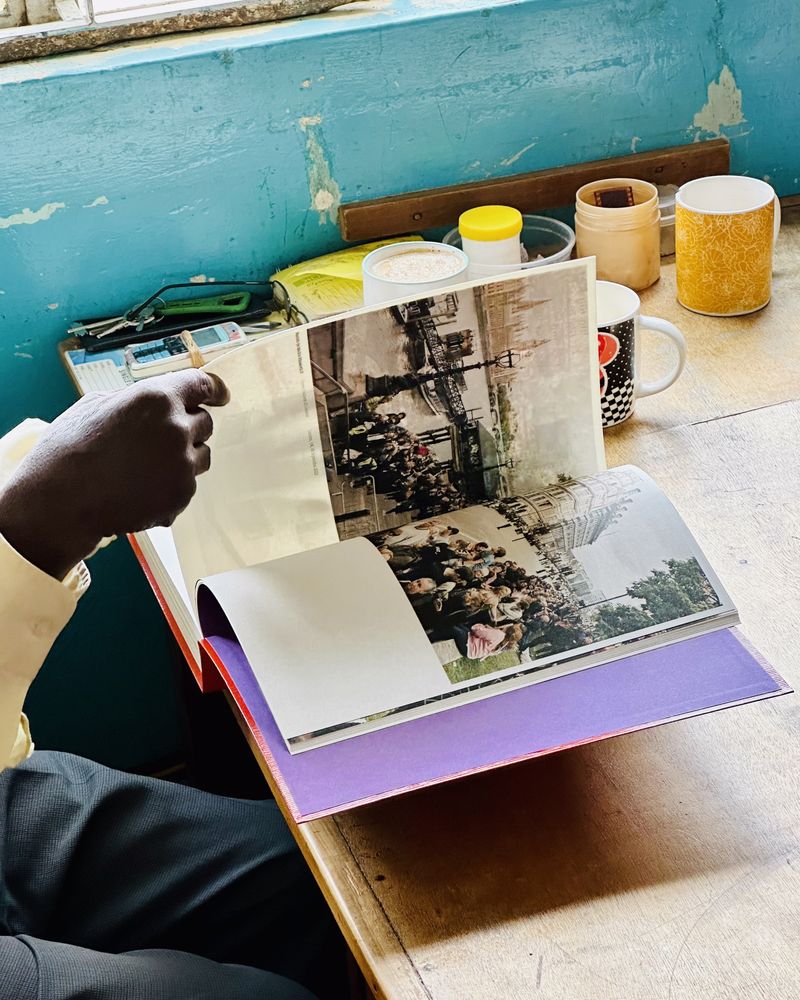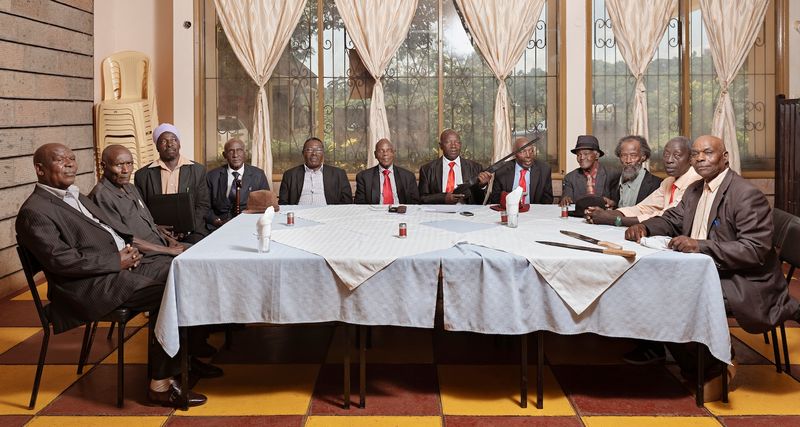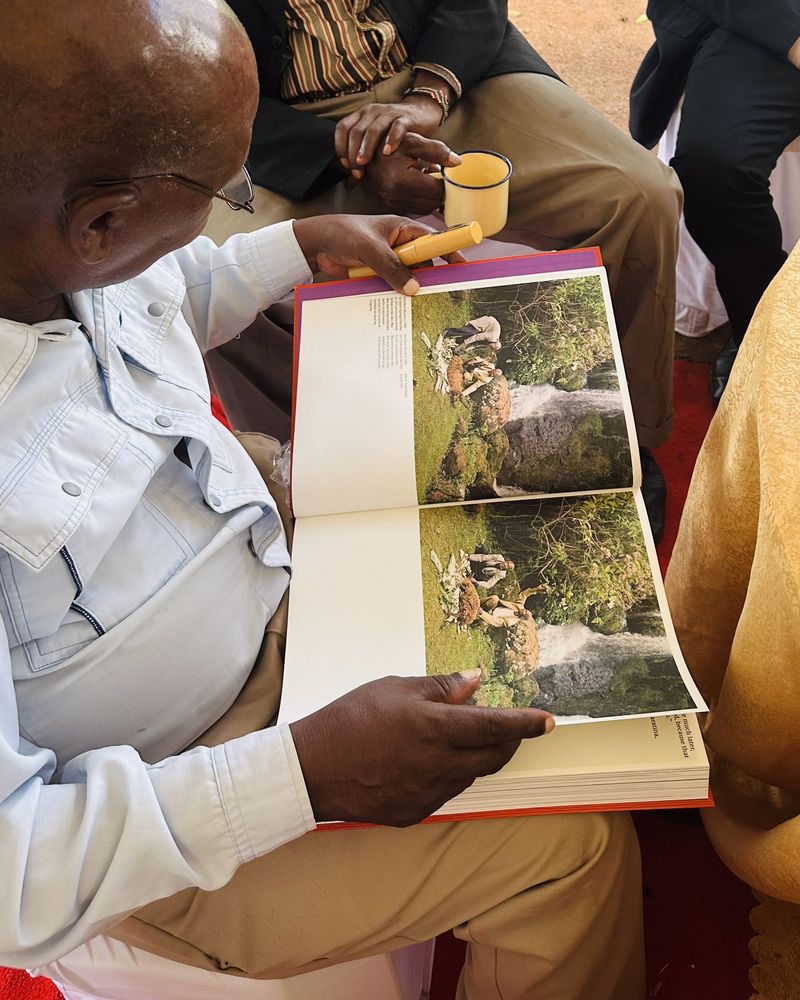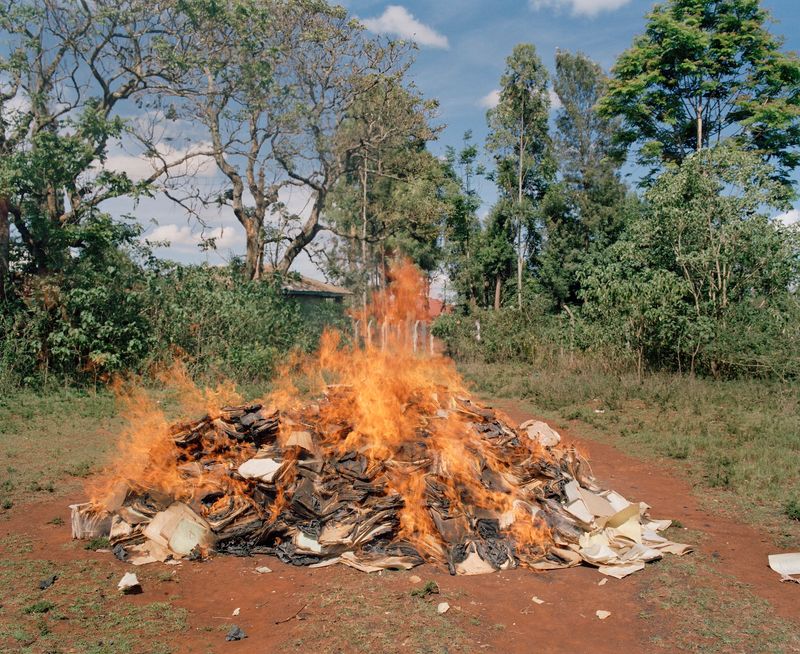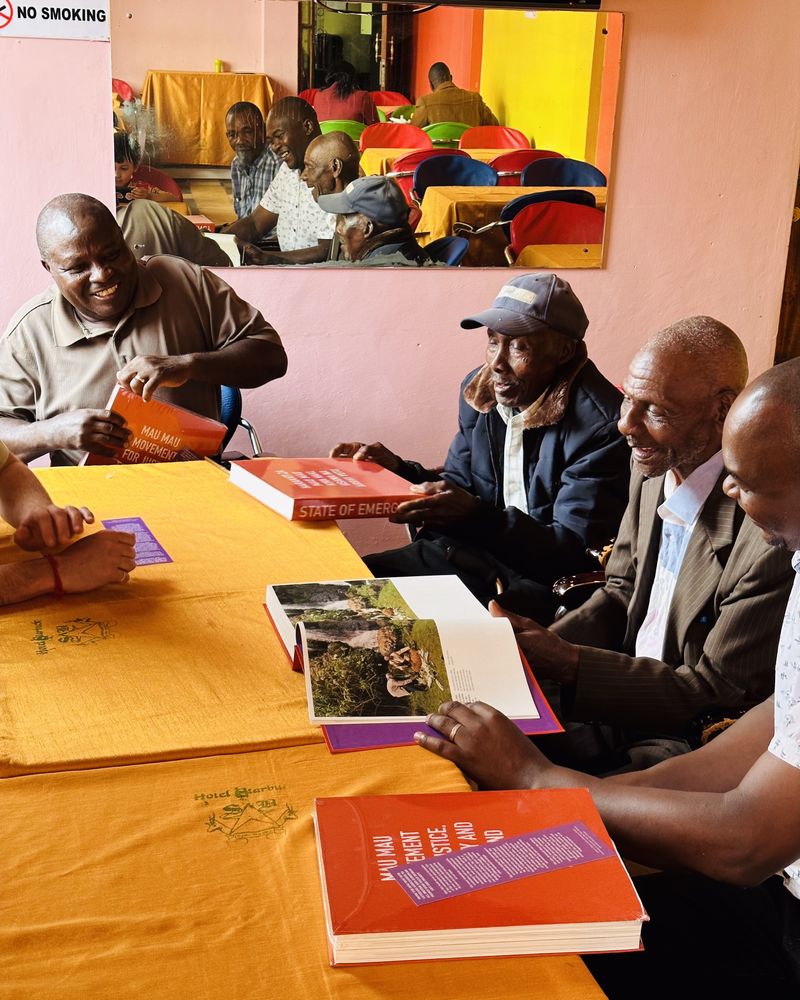Photobook Review: State of Emergency by Max Pinckers et al.
-
Published11 Apr 2024
-
Author
10 years in the making, State of Emergency is a collaboration with Mau Mau war veterans in Kenya that comes to fill the deliberate holes in British colonial history, and materialize new records of a long, misrepresented fight for independence.
“Dear Max Pinckers and Associates
As Chairman of the Mau Mau War Veterans Association (Murang’a Branch), I take this opportunity to officially welcome you to our country. […] Mau Mau Veterans fought for freedom and human dignity. We are happy you have chosen to talk to us who actually fought in that war. You will get to hear the truth as opposed to the lies and negative propaganda the British spread across Europe. How they sold falsehoods to their own people, while hiding the viscous, racist, hatred, unjust and brutal occupation of our ancestral land, turning us into slaves and labourers. They robbed us by force of gun”.
State of Emergency, self-published by Max Pinckers, starts with the reproduction of this letter. As he accepts to collaborate, Chairman Peter G. Kamau lists a series of goals he envisions from working closely with the Belgian photographer and his team. His association aims to “improve the Mau Mau liberation war’s image in Europe,” and to “counteract the negative narratives surrounding it.” They wish to create material that can be later used in their ongoing court case in London, helping them obtain “compensation for the atrocities committed.”
A layered narrative with no claims of linearity unfolds. Intertwined with documents from The National Archives of Britain, of Kenya, and from the Archive of Modern Conflict in London are portraits of the Mau Mau today, as well as photographs registering historically relevant places: mass graves, execution sites, detention camps, trees that stand as memorials. Last, there are images where the Mau Mau demonstrate scenes they, themselves lived during the war. We see two men swearing an oath in a forest. A group of veterans carries a wounded fighter during a battle, two women hide food in trees for others to collect it. “It started very spontaneously. When the veterans were telling their stories to me, they would sometimes demonstrate how it was,” Pinckers explains. “The old men would use their walking sticks as if they were guns. It was a way to express things without explicitly putting them into words. Dealing with traumatic pasts, sometimes it’s easier to physically show something than it is to literally explain what happened. I found it a moving way to make pictures, where people demonstrate things that happened to themselves, but 60 to 70 years earlier.”
There’s a certain degree of latency these demonstrations express, proving something decades after it happened. In their construction, memory and documents cooperate. The bodies of the Mau Mau, the land they are immersed in, can’t ever be the same as they were. Yet, in a way, they are, and so they’ve been for all this time. Does the delay make these images even more powerful, as it is an expression of a forced cancellation lasting 60 years? The same temporal elements marking the demonstrations as strange, and slightly exceeding reality, are also stressing their factual urgency. What can be considered as a proof stretches in front of our eyes.
Early in the book, one photograph shows a roundtable of veterans as they go through piles of documents and pictures. They are looking at images from the archives as well as the portraits made together. “What I didn’t do so often in my previous work, and became absolutely crucial in this project, is to be very transparent in the making process. You will find conversations between me and the veterans about the making of those scenes, discussions about what it means to show certain images… A kind of feedback loop that includes all the doubts, all the uncomfortableness.” The narrative is punctuated by interventions of this kind, where the same pictures from the book are re-photographed in the hands of the Mau Mau. They touch them, scrutinize them, discuss them.
Should everything be represented? One man stands upside down against the wall, he’s demonstrating the position Mau Mau detainees would hold when castrated. “That’s a picture we discussed together afterwards. Should we show this or is it too violent, too uncomfortable? In the beginning, my reasoning would be not to include it, as it was too much of a reimposition of an act of violence. But they would say: ‘No, this is very important, you made this picture, we made it together, we have to show what happened to us.’ That kind of conflict I found very interesting. We are uncomfortable seeing people who have been subject to violence repeating it: it is so confronting and unconventional that it makes us anxious as viewers. Rejecting the violence and saying: ‘we don’t need to see it, we know what happened,’ is also a way, in my opinion, to maintain power over the narrative from a position of privilege.”
The intricacies between photography and power are similar to those affecting any sort of visual or verbal narrative. Who has the right to tell a story, and how? State of Emergency constantly moves within those dynamics in the almost existential search for a perfect balance, one where a narrative is easy to follow, though not overly directed and imposed, where the author declares his presence while leaving all the necessary space for the emergence of a story that isn’t his own. “It was difficult for me to understand what ordering it should have—of course as soon as you put images into a sequence you’re telling a story, and I didn’t feel it was my position to do so. I didn’t want to tell a story in that sense. Little by little I found a way to make a book that was quite honorable to their way of doing things, of looking at things, and at the same time making subtle connections between the images. For example, we had made a picture of a demonstration by Beninah, showing how she had been interrogated. When I went back to The National Archives in the UK, I came across a photograph that looked very similar to the scene the veterans had put together. There is a resonance between the archive and the pictures we made that is hard to express in words. Things eventually fell into place, from one story that connects to another story, that connects to an archival piece, or to a place, or to an event… In an almost intuitive way, the sequence for the book came together. It transitions from violent events, to very personal and emotional testimonies, to political issues, and I like that weaving—it’s not chronological, it’s not really thematic, it kind of just flows in an emotional, associative way.”
The subtle balance of State of Emergency is also one where academic spaces in Europe—in 2021, Pinckers obtained a PhD in the Arts at KASK, Ghent, Belgium—and the veterans in Kenya could come to speak the same language. “There is a big gap between the process of intellectualization, thinking about how things should be represented, and how they often actually are,” says Pinckers, “how they function in a place where you’re dealing with people’s experiences, as compared to a more abstract theorizing about the politics of representation.” This language needed to be devoid of exceeding self-reference, and things that felt excessively conceptual. “Eventually I realized I didn’t want to over-intellectualize things or work too conceptually.” “My own positioning from the previous work that I made also shifted,” he adds, “from focusing on critically questioning the image, de-constructing the relationship of photography to truth, to letting myself be guided by the veterans and the stories they wanted to tell. I could then offer my expertise as a photographer to make beautiful, strong images with them that represented this.”
Meeting with the veterans to look at photographs from the British archives played a role in this shift, again measuring the distance between the academic way of analyzing images and the more practical roles they can take. “When I see a picture, I assume it has been photographed for a very specific reason, and that there are lots of things that are not shown. When looking at these propaganda photographs it is clear that, other than being documents for the future, they wanted to make the British people back then believe that what they were doing was a good thing. I reproduced over 1200 photographs from The National Archives in London, printed them and I brought them back to Kenya, as the British archives refuse to digitize or repatriate them. It was the first time the veterans were seeing those pictures. To their reasoning, they were very important documents as proof of something that had happened. In one of the conversations in the book I ask them: ‘Do you think these pictures tell the truth or are they lies?’ They said: ‘It’s the truth. It’s exactly the way it was.’ Then, of course, they were disappointed that many things were missing and not shown.”
In a way, the status of images in State of Emergency moves back to an idea of evidence. They are signs of a truth. One that needs a certain degree of fiction, too, in order to become visual – the veterans demonstrating scenes from their past. As the new images and the now re-appropriated archival photographs flow altogether, a collective re-writing of history takes shape: one that is as fluid, personal, and ambiguous as images are. “Pictures don’t claim any facts, neither are they completely fictional. With the images of demonstrations, you don’t quite know how they relate to certain things… And that is their beauty. It’s a different way of looking at and engaging with history—more fluid, more emotional, speculative, non-linear and non-Western.”
How can the British propaganda images, once a tool for violence, come to serve an opposite narrative? Long hidden for the violence they portray, in State of Emergency they become a mean to show things the way they were. With everything that isn’t represented becoming, at times, even more relevant than what is there. Hence, more than working as a counter-point, the veterans’ and Pinckers’ images come to fill the deliberate voids that haunt British visual history. It is about making images that weren’t there.
“The British government destroyed a lot of their archives. They burnt them, or threw them in the ocean" Pinckers says. "During the first court case that awarded compensation to a small group of Mau Mau claimants in 2013, it came out that the British Government actually had a secret stash of thousands of colonial-era documents. This became known as the Hanslope Disclosure. This made it clear that we were making pictures that filled in those missing gaps of the archives. Pictures that were not part of the narrative, or may have been present but have been destroyed. It is something very different than trying to wage a visual battle against the colonial propaganda. Instead we see this project as an archive full of holes, and gaps, and missing parts that continuously evolves. And I like that idea much more, because it’s a lot more humble, it’s a lot more speculative, and more personal, as it gives a space to everybody to contribute with anything they think is important.”
--------------
State of Emergency - Harakati za Mau Mau kwa Haki, Usawa na Ardhi Yetu
Self-published by Max Pinckers, 2024
Flexible hardcover, 30 x 24 cm, 448 pages
Swahili and English
Text contributions by Hans Theys, Rose Miyonga, Julius Kimari, Wangui Kimari and Suhayl Omar
Design by Rudy Latoir, Hans Theys and Max Pinckers
Research and Production by Victoria Gonzalez-Figueras
Printed by Cultura (Graphius), Belgium
ISBN 9789082465563
--------------
All images © Max Pinckers et al. unless stated otherwise
--------------
Max Pinckers (b.1988) is an artist based in Brussels, Belgium. His oeuvre explores visual strategies in documentary photography. Not believing in the possibility of sheer objectivity or neutrality, Pinckers advocates a manifest subjective approach, which is made visible through the explicit use of theatrical lighting, stage directions or extras. Extensive research and diligent technical preparation are combined with improvisation to obtain lively, unexpected, critical, simultaneously poetic and documentary images. His works take shape in self-published artist books and exhibition installations such as The Fourth Wall (2012), Will They Sing Like Raindrops or Leave Me Thirsty (2014), and Margins of Excess (2018). Pinckers is a Doctor in the Arts and a lecturer at the School of Arts / KASK, Ghent and has received multiple international awards, such as the Edward Steichen Award Luxembourg 2015 and the Leica Oskar Barnack Award 2018. In 2015 he founded the independent publishing house Lyre Press.
Camilla Marrese (b.1998) is a photographer and designer based in Italy. Her practice intersects documentary photography, design for publishing and writing, aiming for the expression and visual articulation of complex issues.
